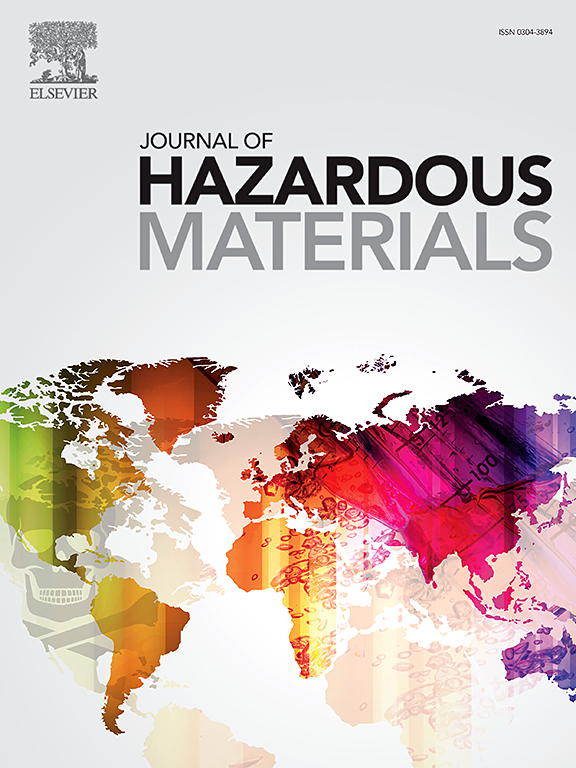A simplified model for simulating lifetime accumulation of persistent organic pollutants in humans with steady-state identification
IF 11.3
1区 环境科学与生态学
Q1 ENGINEERING, ENVIRONMENTAL
引用次数: 0
Abstract
Persistent organic pollutants (POPs) have posed a significant threat to global public health for decades. The ongoing exposure in the pre-and postban periods has created significant knowledge gaps in assessing the long-term health effects of POPs. In this study, we developed a simplified human accumulation load (HAL) model to simulate POP accumulation across general, individual, and intergenerational levels through seven scenarios. The steady-state was rigorously quantified by knee point (the point of maximum curvature in accumulation curves), reached in 6.11 years, and a ΔHAL: IAMT (intake amount) ratio < 1 %, reached in 6.64 years, for a POP with 1-year half-life at 10 ng daily intake. General-level simulations over 100 years showed that the timing of steady-state is determined solely by the half-life of POPs, while accumulation levels are shaped by intake amount, frequency and half-life. Individual-level simulations revealed that changes in intake or half-life result in accumulation curves converging to the same values. Intergenerational simulations for perfluorooctanoic acid (PFOA) revealed peak offspring serum concentrations of 4.48 ng mL⁻¹ (boys) and 4.36 ng mL⁻¹ (girls) after lactation. Over a decade was required to reach 0.2 ng mL⁻¹ , a safe biomonitoring equivalent. The model effectively elucidated the impact of background and ongoing exposure on biases in deriving POP half-life values in humans. The HAL model provides a robust tool for predicting stabilization post-emission reductions, aiding global strategies to manage these persistent contaminants effectively.

具有稳态识别的模拟持久性有机污染物在人体内终生积累的简化模型
几十年来,持久性有机污染物对全球公共卫生构成了重大威胁。禁用前后的持续接触在评估持久性有机污染物对健康的长期影响方面造成了重大的知识空白。在这项研究中,我们开发了一个简化的人类积累负荷(HAL)模型,通过七种情况模拟POP在一般、个人和代际水平上的积累。对于每日摄入10 ng半衰期为1年的POP,其稳定状态严格量化为膝关节点(积累曲线中最大曲率点)在6.11年达到,并且在6.64年达到ΔHAL: IAMT(摄入量)比率<;1%。超过100年的一般水平模拟表明,稳定状态的时间仅由持久性有机污染物的半衰期决定,而累积水平则由摄入量、频率和半衰期决定。个人水平的模拟显示,摄入量或半衰期的变化导致累积曲线收敛到相同的值。全氟辛酸(PFOA)的代际模拟显示,哺乳后的后代血清浓度峰值为4.48 ng mL毒血症(男孩)和4.36 ng mL毒血症(女孩)。经过10年的时间,才达到0.2毫微克(一种安全的生物监测当量)。该模型有效地阐明了背景和持续暴露对推算人体POP半衰期值偏差的影响。HAL模型为预测减排后的稳定性提供了一个强大的工具,有助于有效管理这些持久性污染物的全球战略。
本文章由计算机程序翻译,如有差异,请以英文原文为准。
求助全文
约1分钟内获得全文
求助全文
来源期刊

Journal of Hazardous Materials
工程技术-工程:环境
CiteScore
25.40
自引率
5.90%
发文量
3059
审稿时长
58 days
期刊介绍:
The Journal of Hazardous Materials serves as a global platform for promoting cutting-edge research in the field of Environmental Science and Engineering. Our publication features a wide range of articles, including full-length research papers, review articles, and perspectives, with the aim of enhancing our understanding of the dangers and risks associated with various materials concerning public health and the environment. It is important to note that the term "environmental contaminants" refers specifically to substances that pose hazardous effects through contamination, while excluding those that do not have such impacts on the environment or human health. Moreover, we emphasize the distinction between wastes and hazardous materials in order to provide further clarity on the scope of the journal. We have a keen interest in exploring specific compounds and microbial agents that have adverse effects on the environment.
 求助内容:
求助内容: 应助结果提醒方式:
应助结果提醒方式:


